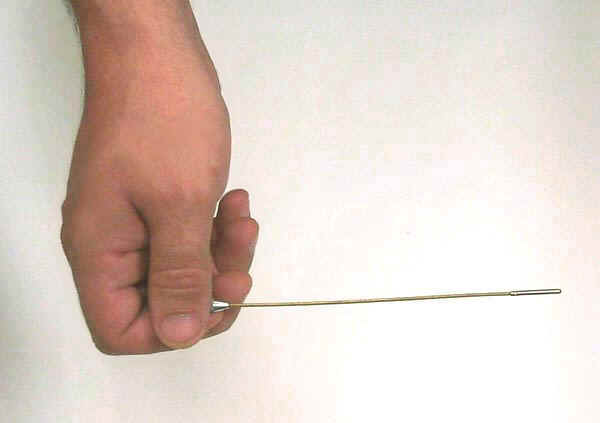Nasopharyngeal Radium Applicator (ca. 1950)
The example pictured above is a "dummy" (non-radioactive) nasopharyngeal applicator produced for training and/or demonstration purposes. In actual use, the small monel metal capsule on the right end of the applicator would contain approximately 50 millicuries (mCi) of Ra-226. One of these would be inserted into each of the nasal passageways for 5 to 15 minutes. The usual intent was to shrink the lymphoid tissues.

During World War Two, it is estimated that thousands of air and submarine crew members were treated with these devices to reduce or avoid the ear problems that could occur from the pressure changes the crew experienced during duty. From the 1940s through the 1960s, as many as several million civilians, mostly children, may have been treated with these for ear and adenoid infections. One of these was the late Frank Zappa.
The dosimetry is somewhat complex because of the non-uniformity of the exposures, but one estimate suggests that tissues 1 cm from the source would have received 200 to 300 rem (2-3 Gy) during a typical 10 minute treatment.
Reference
Janet Raloff. Reassessing Radium's Risks. Science News Vol. 146: 172-173; 1994.
